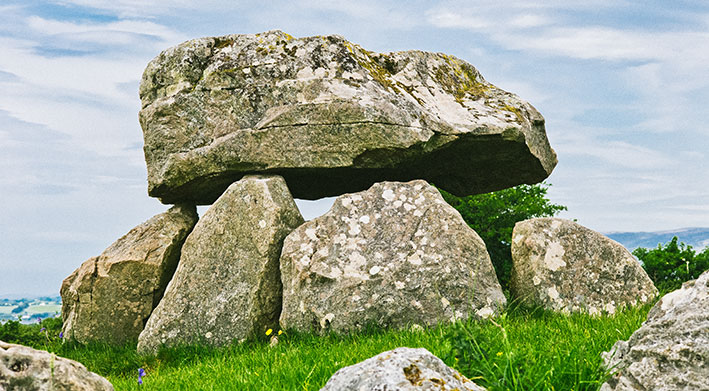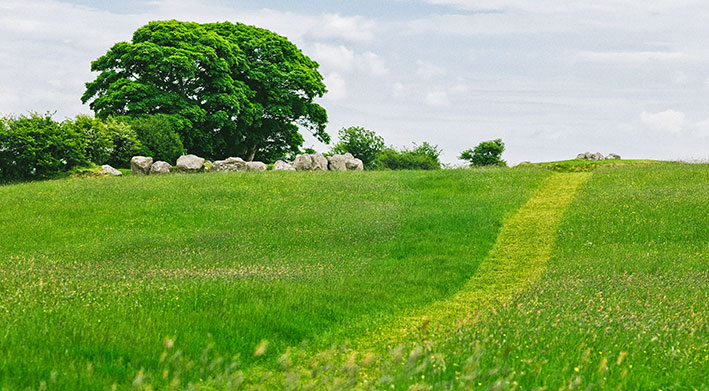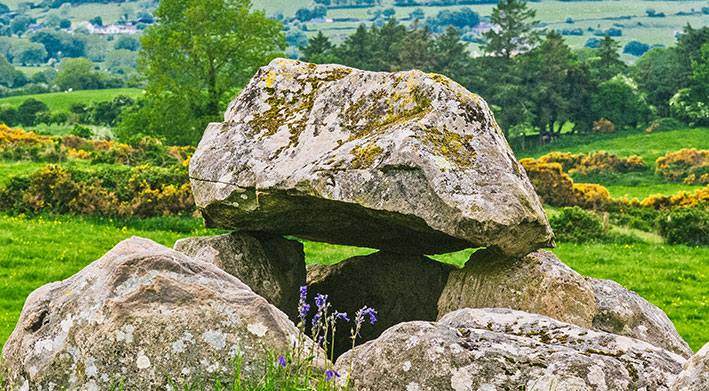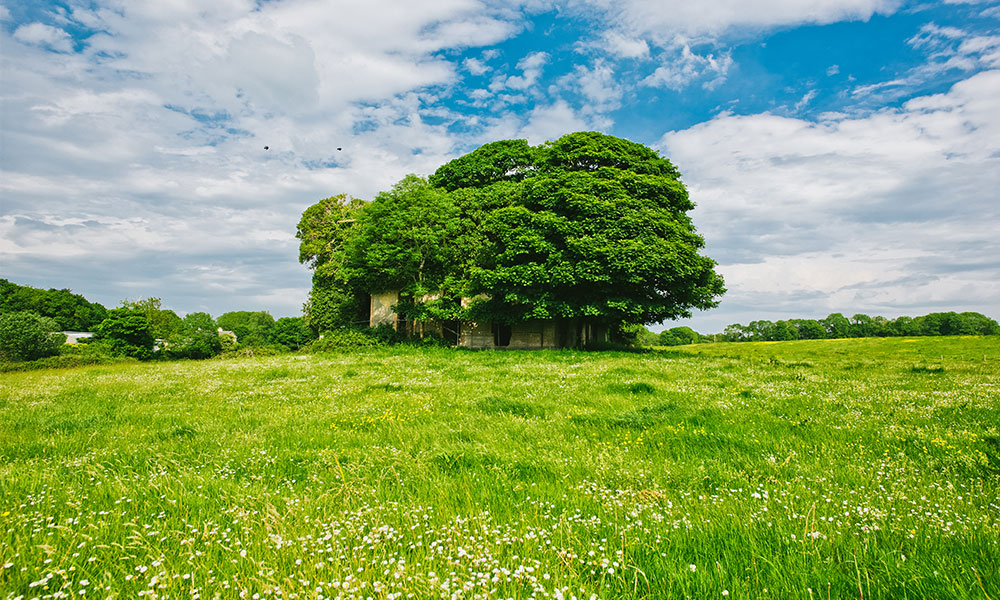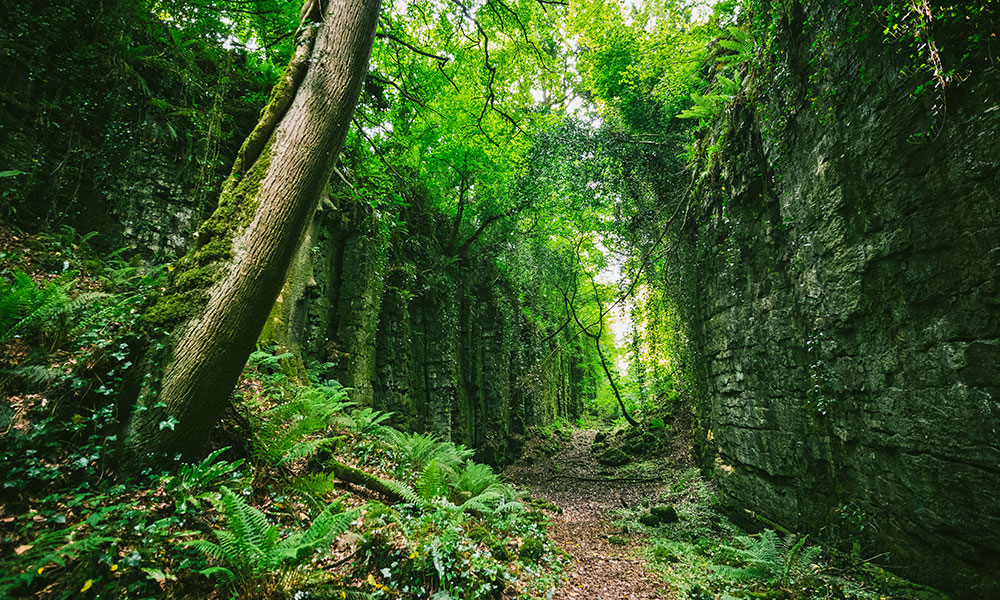OVERVIEW
Carrowmore is the largest group of megaliths in the country and the second largest in Europe, making it a must see when in the Coolera area.
To the southeast of Knocknarea and a 10 minute drive from Strandhill village, lies the townland of Carrowmore which has become famous as one of Ireland’s most extensive prehistoric cemeteries. Monuments here range from five and half thousand to six thousand years old. WB Yeats called the area “the Fir Bolgs” or burial mounds. These dolmens are the remains of actual burial chambers. They were originally covered with earth and stones to make them uniform miniature cairns spread across the landscape. A number of these have capstones with supporting boulders, showing the burial chambers beneath. The ravages of time have reduced the number of identifiable graves recorded here a century and a half ago to less than 50 at present.



